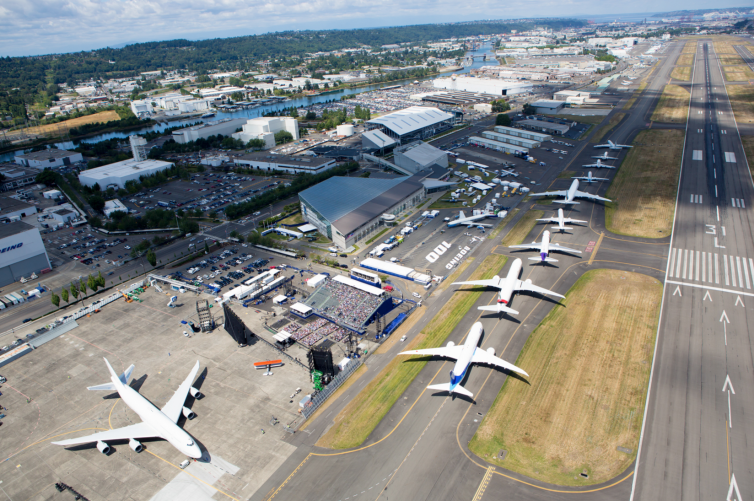
Boeing jetliners, from its first 707 to the latest 787 Dreamliner, line up along a Boeing Field taxiway in Seattle, WA on July 15, 2016 to celebrate the company’s 100th anniversary – Photo: Jeremy Dwyer-Lindgren
One of the best parts of doing this whole AirlineReporter gig is all the people that I end up meeting. Very early on I met Jeremy Dwyer-Lindgren. He was working for NYCAviation.com at the time and we were both new to the airline blogging world. He was also based in Seattle and we created a friendship and have always had a healthy competition.
It was obvious to me that Jeremy was an extremely talented photographer. Early on, I think he would agree that I often won our healthy competition, but the jealous pendulum soon swung the other direction. Soon, bigger and bigger names were looking to make use of his skills and abilities (and rightfully so). He did time as co-Editor-in-Chief with AirwaysNews (Airchive at the time) and was getting more and more freelance work — including USA Today. He has taken photos of some amazing airline-related events and some non-aviation stuff too (including the Super Bowl). He even took the photo that I am currently using on my author profile and Twitter account (while we were in Houston).
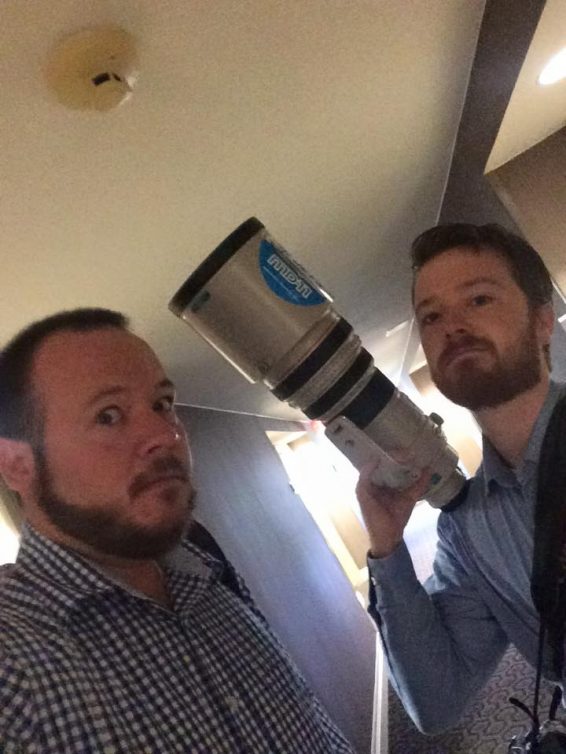
Jeremy and me getting down to business in Houston… kind of.
Going from being an AvGeek with a camera to one heck of an amazing photojournalist is quite the journey. I wanted to share some of his perspective via an interview that we had.
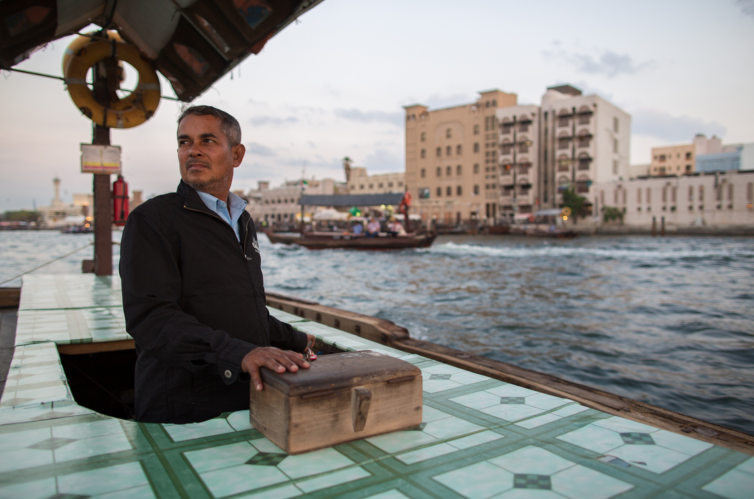
A ferry driver navigates his abra up Dubai Creek on a warm November afternoon in Dubai, UAE – Photo: Jeremy Dwyer-Lindgren
David: What is your ’œreal’ job?
Jeremy: I have two ’“ I own my own business, working for editorial clients like USAToday and local Seattle-region papers, commercial clients, and some weddings/family photo stuff. I lived off of that for over a year, but now my day to day work is with Woodland Park Zoo in Seattle. I do all of their photo/video work. It’s pretty awesome.
How is taking photos of animals different than airplanes?
Well there’s the obvious – one is an airplane and one is an animal. But you need a different kind of patience with the latter. Airplanes generally do the same thing all of the time…they’re pretty predictable. Animals aren’t especially predictable. They also poop…sometimes on you. And pee…also sometimes on you.
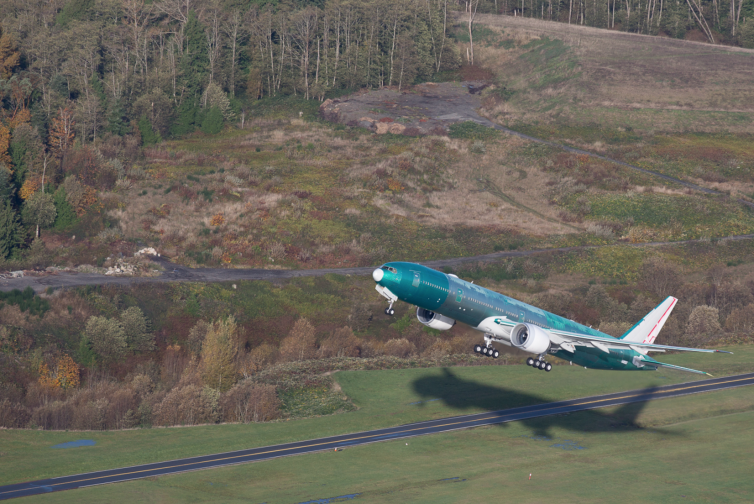
A still yet to be painted Boeing 777 reaches for the sky after taking off from Paine Field in Everett, WA in 2014 – Photo: Jeremy Dwyer-Lindgren
What is your favorite animal(s) at the zoo to take photos?
I do love our baby gorilla, Yola. She’s a real joy to photograph or even just watch for awhile.
How does that compare to taking photos of airplanes? They’re different. Spotting is cathartic to me now’¦so if it’s been a tough day or whatever I just go out and shoot and it de-stresses me.
How would you feel about taking photos of animals on planes?
Every other year there’s some story about a zoo transporting penguins, and they let the penguins roam up and down the aisle of the jet. And I always wish I were on that plane. Always.
How do you keep all the sweet AvGeek Photos on USAT coming?
By spending a lot of weekends on the road hunting them down, and working in photos taken on assignments. It’s been surprisingly tough keeping it interesting over the two years I’ve been doing it, and some months are better than others (almost every photo in the gallery was taken in the previous month). So it frequently comes down to new backgrounds, news events, and something different weather-wise. Also gives me space to try new things and see if they pan out. But I also haven’t ventured too much into military and GA yet, so I could see expanding those in 2017 as opportunities arise.
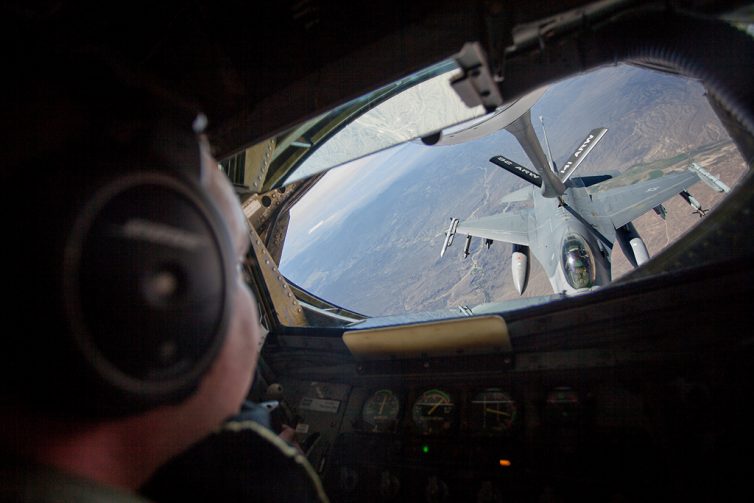
An F-16 fighter jet with the U.S. Air Force approaches the refueling boom of an air force KC-135 Stratotanker during a training mission over Nevada on July 22nd, 2016 – Photo: Jeremy Dwyer-Lindgren
When did you know you were an AvGeek?
I think my parents would say from pretty early on. We lived under the approach path to Worcester Airport, in Central MA, back when it was a reasonably bustling regional airport. And I loved watching them come in. I especially loved going up there because the jets would taxi right by the parking lot. I’d talk anyone into taking me up: parents, neighbors, whoever.
What is your first airline-related memory?
Believe it or not I grew up terrified of flying. I’d have what we’d probably describe now as panic attacks that would start a day or two before the flight. It gradually went away by the time I turned 20, though to be honest it still comes back periodically. Anyways, it was a Continental Express Embraer 120 from Worcester to Newark. I saw a crack in the overhead panel, next to the air vent, and kinda lost it. I knew enough to know cracks in fuselages were bad, but not quite enough to know that the overhead panel didn’t extend to the fuselage. So we took a 30 minute delay while the crew and my parents did their best to calm me down. It worked, eventually. Still watched that thing vibrate like a hawk all the way to New Jersey. Not really sure what my plan was if it broke loose…
But I always loved looking at and watching airplanes. I like the shape, the aesthetic ’“ the noise. And though I hated riding in them for a long time I loved the promise of adventure ’“ that you can get on a metal tube and wind up on the other side of the globe in a whole new place. That was wild to me. Still is.
What’s been your favorite airline-related photo shoot?
Flying aboard the last scheduled/commercial DC-10 flight for Airways News, from Dhaka to Birmingham UK, is probably at the top. Unless I flew one when I was really, really young it was my only ’œDeath Cruiser’ flight, so the personal avgeek angle was there in spades. But I’m also super proud of the story and photos I filed that day. It felt really good to put in a solid package after working to make it happen for over a year. It was everything I ever imagined and hoped it would be, both personally and professionally. Best of both worlds, really.
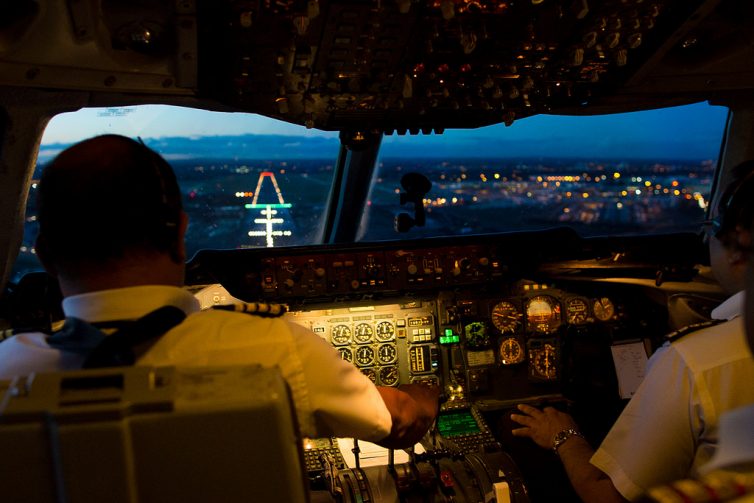
In the cockpit of the last DC-10 flight – Photo: Jeremy Dwyer-Lindgren
What is your favorite airport to spot?
Tough. I like Anchorage for its gorgeous backdrop, though I hate freezing my ass off. LAX is clich but always a winner. Taipei Songshan and Vancouver YVR are also very nice. Miami is high on my list of places to shoot at that I haven’t been to yet. Backgrounds look mostly dull but the variety of traffic appears to be incredible.
What’s your favorite airline? Favorite plane? Why?
I do most of my flying on Delta in the US, and I like them quite a bit (sorry Alaska). But I think my favorite airline in business is EVA ’“ really enjoy their new product and soft service improvements. For economy I’d say Singapore. Fantastic service made LA to Singapore via Tokyo go by as well as it could have.
Favorite plane to fly on? Super clich but probably the 747. Favorite to photograph? I could shoot tri-holers all day long for years and not get bored. Love the DC-10/MD-11/L-1011.
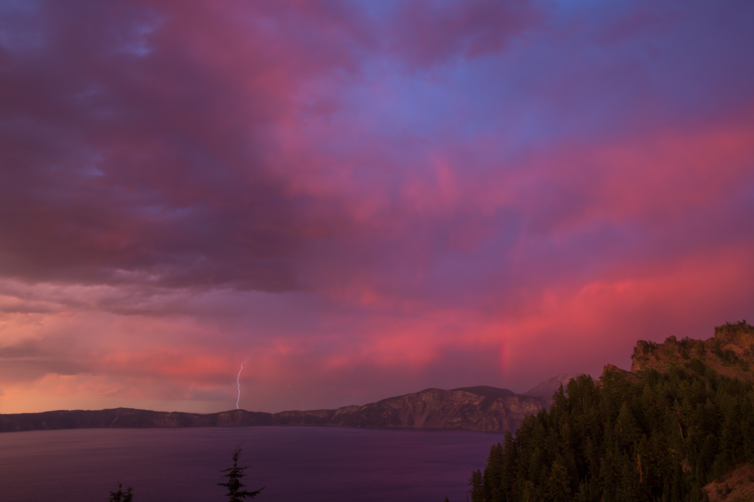
Crater Lake National Park: Oregon, USA – Photo: Jeremy Dwyer-Lindgren
How many miles would you say you have flown for stories?
I dunno the number for sure, but I’d venture somewhere around half a million.
What’s your white whale (the plane you have wanted to photo, but haven’t yet)?
I don’t really have one at the moment. I’d do a lot to see a Tristar in the air I suppose, and I know there’s one or two (and soon to be another, I think?). So I’ll probably hunt that down eventually. But no long-standing white whales right now.
The EVA 777-300ER special paint got the better of me for something like five years though. I wanted that in front of Mt. Rainier pretty bad. And I kept missing it. Often by mere minutes. But finally got it, and good thing too – it was repainted within a few weeks.
What’s been your favorite non-airline-related photo shoot?
Another tough one. We had a baby gorilla born last year at the zoo. It has been pretty spectacular to be a part of telling that story.
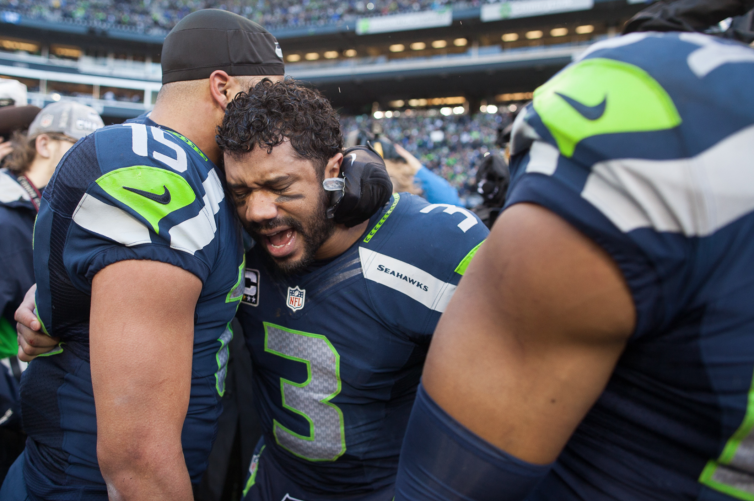
Overwhelmed with emotion, Seahawks quarterback Russell Wilson cries in the arms of teammate Jermaine Kearse after clinching his second consecutive Super Bowl berth following an astonishing come-from-behind victory against the Green Bay Packers on January 18, 2015 in Seattle, WA – Photo: Jeremy Dwyer-Lindgren
What was your first camera?
My first camera was a Canon fixed 35mm point and shoot that ran film. Being so wide it was terrible for airplanes, but it took my first airplane photo: an Arrow L-1011 at BDL. If it wasn’t for the billboard titles you wouldn’t know it, though. It’s crazy tiny in the frame.
Are you a Canon or Nikon guy?
I’m a Canon person, mostly because I just always have been. And by now I’ve sunk a lot of money into lenses, so I’m not switching anytime soon. But I don’t really think it matters which one you choose. It’s one of those over-hyped rivalries that doesn’t amount to much in my opinion ’“ not too like unlike Boeing versus Airbus. Both are good, both will deliver what you need if used right and well.
What best advice can you give to beginners wanting to take airline photos?
Do what makes you happy. Take screening avgeek sites like airliners.net with a grain of salt – they can teach you a solid editing technique, but it can also really box you in with both editing and more importantly composition. Upload to NYCAviation [coming soon, I promise!] instead (<–shameless plug). But above all, do what you makes you happy.
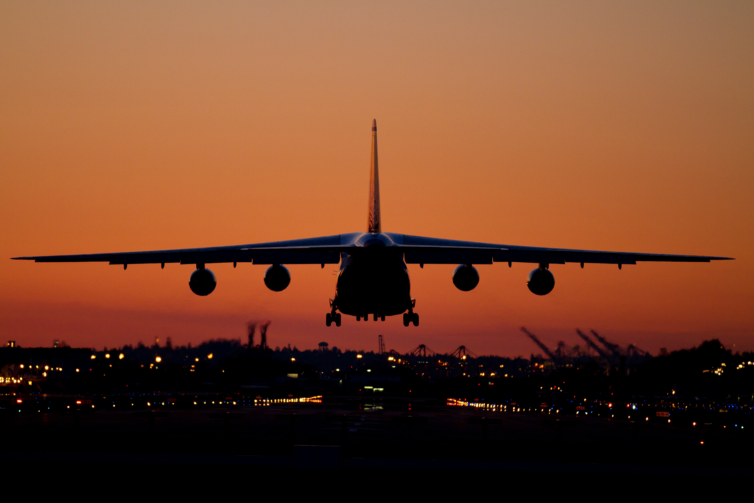
One of the largest aircraft in the world, the Russian Antonov 124 cargo jet, lands in Seattle on a wonderful summer’s eve – Photo: Jeremy Dwyer-Lindgren
What’s the number one mistake you think airline photogs make?
Not remembering that cameras and lenses are tools. If you don’t know your tool well, you aren’t going to get as much out of it as you could. Related, folks think gear upgrades are going to result in a better photo. Maybe it will from a technical perspective ’“ but it isn’t going to make you a better photographer. The tools are only as good as the person using them.
That doesn’t mean you don’t grow out of a lens or camera body, or realize that you need better tools to accomplish a better final product. But new tools for the sake of new tools isn’t going to get you very far.
One other, because I see it all the time, is treating a few of the screening sites as gods. Don’t get me wrong, great photos and photographers live on those sites. But they’re just one style really. Lots of folks do great, great work that would likely never be accepted on those types of sites. And it’s too bad that their over-hyped reputation turns them into the gold standard of aviation photography. I don’t think it’s their intent, but it discourages quality work from getting the traction it deserves and pigeon-holes photogs into a fairly narrow composition and editing style.
Again it goes back to doing what makes you happy, but I can’t tell you how many otherwise fine photographers walk away from the hobby because they took those sites too seriously and it ruined it for them.
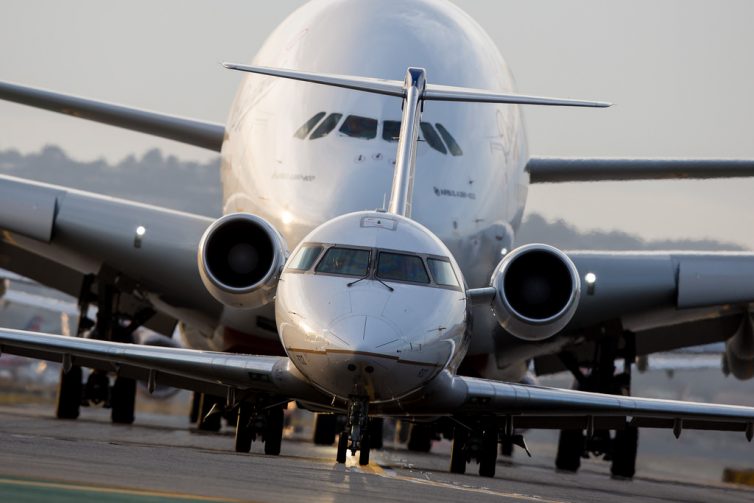
A tiny Bombardier CRJ-200 is shadowed by the looming figure of an Airbus A380 as the two await to depart San Francisco International Airport on October 23, 2016 – Photo: Jeremy Dwyer-Lindgren
How good does it feel when we are both at the same location, taking the same photo, but yours are at least 10x better than mine?
If mine was 10x better, it probably wasn’t the same photo ;-). For the record though, there are other photographers whose work I absolutely love and that I’ve had the privilege of working alongside – and I wonder the exact same thing. Pushes me to do better.
What made you want to turn your hobby into a source of income?
Who doesn’t want to live the dream? I started with NYCAviation, basically a start-up news department focusing on AvGeek aviation content. We did the 787 first flight, which was my first assignment, and I realized that while I wasn’t great, I wasn’t half bad either. Not long after I moved over to local news, moonlighting on assignments for an alt-weekly, and loved it. I might’ve even gotten a little better since then.
Being on the inside, getting the scoop, hunting for that perfect shot, telling the story visually ’“ it’s pretty addictive. And you get to do things, go places, meet people that you would never have had the chance to do otherwise. Once I realized I could hack it, I wanted in.
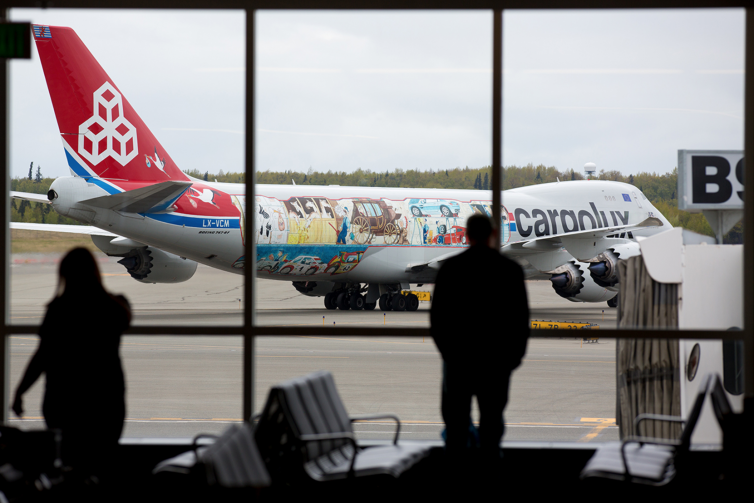
Passengers take a look at a cleverly painted Cargolux Boeing 747-8 freighter as it taxies for departure from Anchorage, Alaska in May of 2016 – Photo: Jeremy Dwyer-Lindgren
How is what you do different from what a hobbyist might do for say, a first flight?
Not necessarily anything. Lots of hobbyists do pro quality work.
But I do think there are several. First, a hobbyist only needs to answer to herself, himself. A pro answers to their editor, the client, etc. So there’s the pressure to have to perform. If it’s a new client or a new editor that you really want to get in good with there’s extra pressure to knock their socks off to help you move up on the pecking order, get the call on the next job that comes along, or win the next contract.
Flowing from that, the workload is often much higher. On a first flight isn’t enough to just get the rotation and the landing, though those are often the most important. I’m thinking ahead to what the key storytelling shots are likely to be aside from the main attraction, and how in a perfect world I want to execute those and making them visually interesting, contextualized, and varied. A typical gallery is expected to be at least 15 good, different photos.
It also moves much faster. You’ve gotta upload, edit, keyword, caption, and file on deadline, which with something time sensitive like first flights pretty much comes down to as fast as possible. I typically aim to go from upload start to filed within 15 minutes.
Commercial shoots can be even more work, typically because you have near total control of every variable, while news jobs often don’t. So you’re planning out lighting (natural and studio), assistants, gear needs, talent, etc.
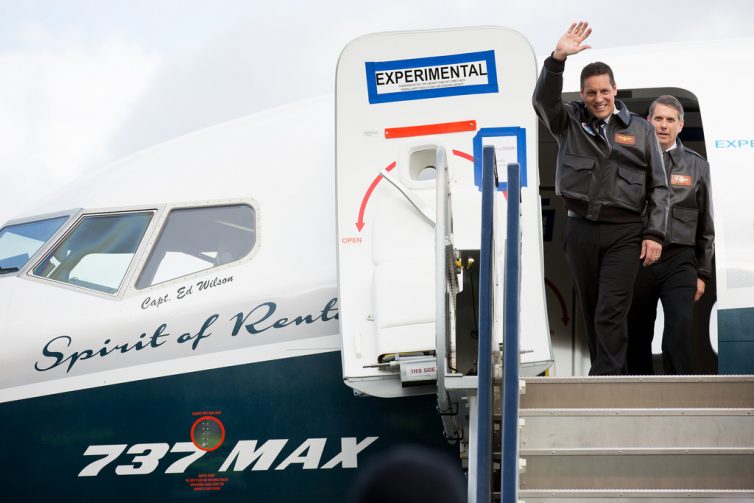
Boeing test pilot Craig Bonben, left, waves after completing the maiden flight in Boeing’s first 737 MAX jet on Jan. 29, 2016 – Photo: Jeremy Dwyer-Lindren
What equipment did you need to buy/upgrade to go pro?
In terms of cameras and lenses, not much at first. I had a decent set up that I’d built up by funneling all my extra cash into upgrades for years. And once I turned it into a business then it became a value proposition ’“ is this new lens going to increase my value to the client enough to justify spending the money on it?
But there were a lot of other things. Business license, liability and gear insurance, professional association fees, lighter and faster laptop, wireless capabilities, improved software ’“ a lot of these were workflow improvements to help me move product images on tight deadlines from the field.
What advice would you give someone who wanted to go pro?
Two things: First, don’t devalue your work. If you’re giving it away either literally or effectively you’re undercutting not only every other photographer out there trying to make a living, but you’re undercutting yourself too. Be a responsible member of the community. Build your knowledge…take classes in business and marketing, find a mentor who is established and genuinely interested in coming alongside you.
Second, doing it as a hobby and doing it to earn a living are very different experiences. As a hobby you can take the parts you like and ditch the ones you don’t. That’s not a luxury you have when your paycheck is on the line. You gotta take it all ’“ the good and the bad, and running a business isn’t easy. Be ready for way more boring than you thought. It’s a lot of paperwork, dull but good paying photoshoots, planning time, and hustling – so much hustling.
What’s your fav part about being a photo journo?
Being invited into someone’s life and being able to share their story. I’m incredibly grateful for the many times that I’ve been able to walk into someone’s day ’“ from their best to their worst and share in that experience. It’s humbling.
To a lesser extent it’s the places you go, the people you meet, the things you get to do that you would otherwise never do. Photojournalism has taken me around the world from Super Bowls to baby gorillas, riding with the Blue Angels to the very top of the Space Needle. I’ve been very lucky.
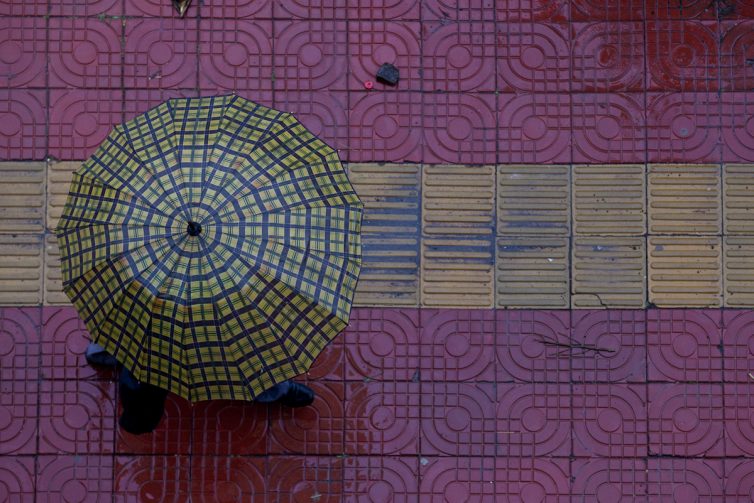
Rainy day: Addis Ababa, Ethiopia – Photo: Jeremy Dwyer-Lindgren
What do you say to people who say photojournalism is a dying breed?
They aren’t wrong, if we’re talking about editorial.
The role of the photojournalist is to go out and bear visual witness to the happenings of the community from sports to court cases to the pressing social issues of the day. To tell stories through photos and video. And they typically make money by working for editorial outlets ’“ ie news. People aren’t supporting the news as much these days, newspapers especially (pretty much the biggest employer of still photojournalists), for a variety of reasons. And fewer news outlets translates into fewer opportunities for photojournalists.
Yet people enjoy and benefit from high quality storytelling visuals every single day. And content does better when good visuals are attached, so there is a disconnect here: Readers see the value in great photography every day, but they increasingly don’t value it enough to pay for it.
That AP series from the Russian ambassador assassination are a great example. Everyone I know saw those photos and were like ’œdamn…awful but wow – what a striking, iconic photo’. But those photos aren’t going to happen if people aren’t supporting the businesses and outlets that employ the photogs to get those shots.
Want to see more of it? Buy a newspaper subscription, donate to places that support good visual journalists.
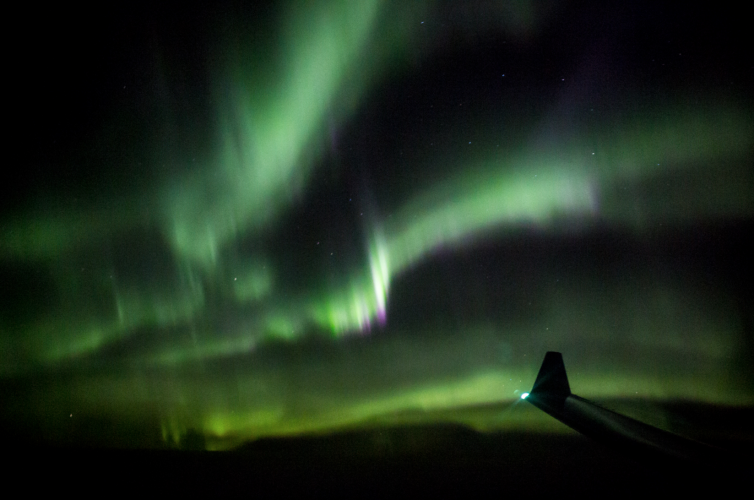
The Northern Lights dance over Greenland, seen from out the window of a Delta Air Lines flight en route to Paris in November, 2016 – Photo: Jeremy Dwyer-Lindgren
What’s your favorite airline site that rhymes with ’œHairline Exporter’?
Not exactly leaving me with a lot of choices here, but I think I’m gonna definitely have to go with Richard Quest.
An interesting article about a very knowledgeable and all around good guy.
Thank you David for a awesome article. The photos is outstanding.
Everyone reading this, I wish you the best for 2017. May all your wishes come true and for AIRLINE REPORTER and staff, keep up the good work.